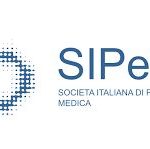
Don’t let learners perform procedures directly on patients, without having practiced them in an appropriate simulated model, and without proper tutorial supervision.
Type of practice
Other practices (health education)Topic Area
Medical EducationTeaching based on “see one, do one, teach one” is still widely adopted, despite that several studies have shown its limits in validity and most of all in patient safety, when compared with available metods of simulation. The ethical imperative is therefore “never for the first time on patients!”
Sources
1. Granry JC, Moll MC. État de l’art (national et international) en matière de pratiques de simulation dans le domaine de la santé dans le cadre du développement professionnel continu (DPC) et de la prévention des risques associés aux soins. Rapport de Mission HAS du 10 janvier 2012 (www.has-sante.fr).
2. Cook DA, Hamstra SJ, Brydges R, Zendejas B, Szostek JH, Wang AT, Erwin PJ, Hatala R. Comparative effectiveness of instructional design features in simulation-based education: systematic review and meta-analysis. Med Teach 2013; 35: e867-98.
Attention. Please note that these items are provided only for information and are not intended as a substitute for consultation with a clinician. Patients with any specific questions about the items on this list or their individual situation should consult their clinician.


Recent Comments